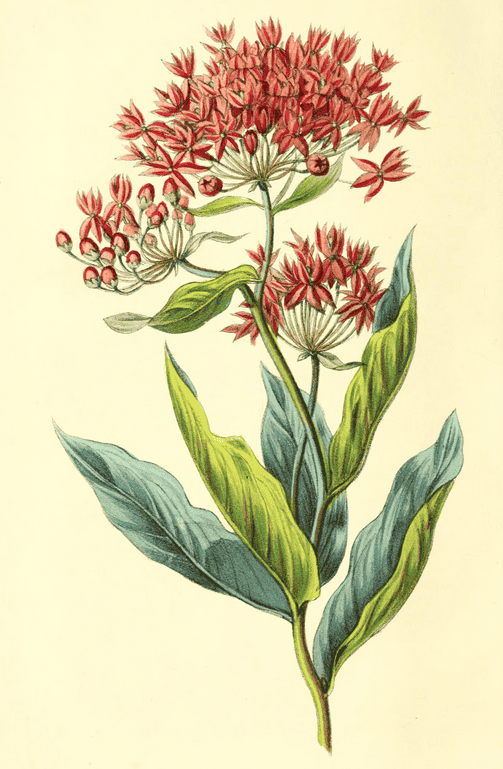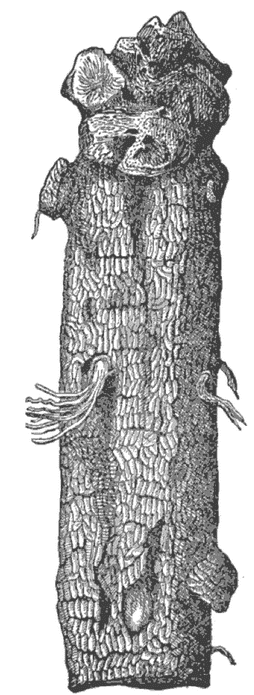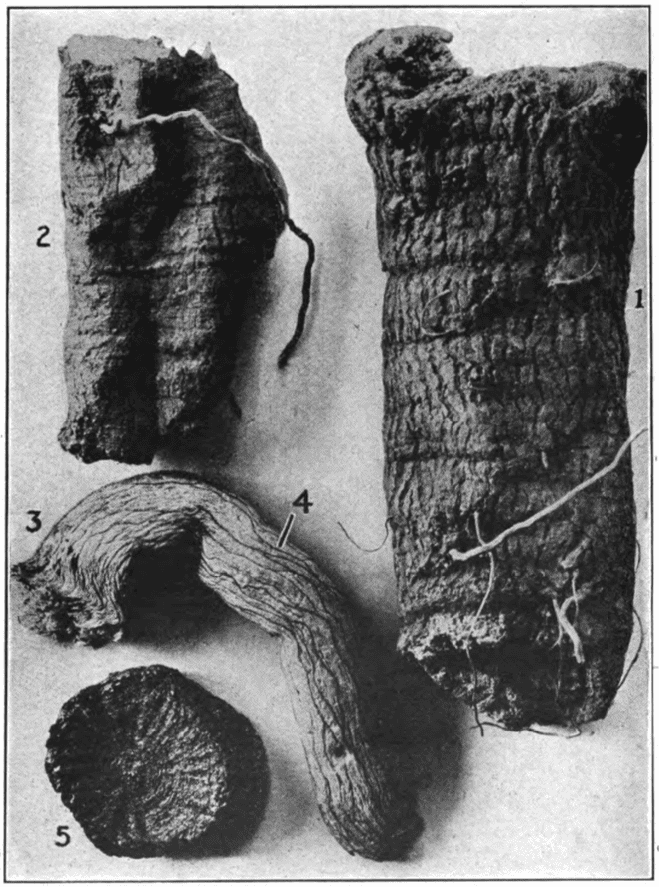Asclepias, Pleurisy rootButterfly-weed, Flux-root, White root, Silk weed, Tuberous Milkweed, Orange Swallow-wort |

|
 Revue horticole, sér. 4 Vol. 28 (1856)
Revue horticole, sér. 4 Vol. 28 (1856) Pleurisy root
Pleurisy rootNotes on Pharmacognosy, Otto Augustus Wall, 1902
 Pleurisy root
Pleurisy rootSquibb’s Atlas of the Official Drugs, Mansfield, 1919
Botanical name:
Asclepias tuberosa
Related species used similarly but considered less active include A. syriaca, A. incarnata, A. acuminata, A. quadrifolia
Parts used:
Root, Rhizome
Temperature & Taste:
Cold, dry. Bitter
Uses:
1. Clears Heat and Phlegm, Stops Cough:
-Respiratory Tract Infections, Bronchitis
-Asthma
-Pleurisy, Pneumonia (early stages)
2. Clears Wind-Heat, Promotes Sweat:
-Cold, Flu
-Nasal Catarrh, Sinusitis
-Fever, especially with Cough
-Typhus Fever
3. Clears Wind-Damp:
-Arthritis and Rheumatism
4. Moves Qi:
-Colic
-Hysteria
Dose:
Small doses taken frequently are more effective during Coughs and Fevers.
It was often infused in Wine or Decocted in Milk.
Of the Powder: 20–30 grains, 2 or 3 times daily
Infusion: half–1 teaspoonful into a cup of boiling water, infuse 10–15 minutes, taken 3 times daily.
Tincture (1:5 in 45% alcohol): 1–2mls.
Substitutes:
1. Milkweed
2. Myrrh, Squill, Sassafras, Licorice, Swallow-wort (Medical Flora, Rafinesque, 1828)
Main Combinations:
1. Cough, Bronchitis:
i. Pleurisy root with Mullein, Coltsfoot, Licorice
ii. Pleurisy root with Wild Cherry bark (or Bitter Almonds)
2. Pleurisy:
i. Pleurisy root with Plantain, Violet, Licorice
ii. Pleurisy root with Dates, Hyssop, Licorice
iii. Pleurisy root with Violet, Quince seed, Melon seed, Tragacanth
iv. Pleurisy root with Squill
v. with Cold-Phlegm, Pleurisy root, Fenugreek, Marshmallow, Licorice
3. Chicken Pox, Pleurisy root with Elder flower, Senna, Yarrow, Ginger (The Medical Herbalist)
4. Rhinitis in Children, Pleurisy root with Eyebright, Camomile (King’s)
Major Formulas:
Cautions:
1. Avoid concurrent use with Cardiac glycosides.
2. Avoid in Pregnancy.
Main Preparations used:
Tincture
